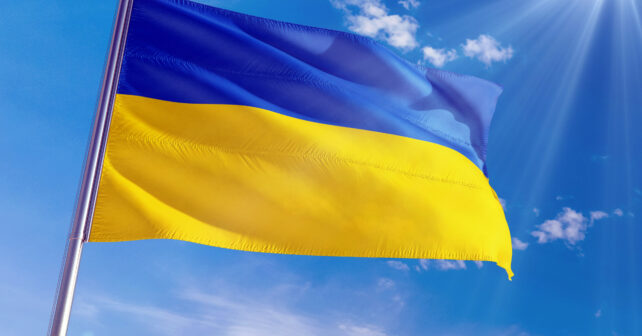
While some of Dr. Volosovets’ colleagues have sent their spouses and children to safer parts of the country or to neighboring countries, he and his family have decided to remain in Kyiv. Dr. Krylyuk’s parents, grandparents, sister, and nephew evacuated to western Ukraine near the Romanian border. “I feel very calm because I know my family is absolutely safe now,” he says.
When there are large numbers of patients at the hospital, both Dr. Volosovets, Dr. Krylyuk, and their colleagues remain at the hospital overnight. Sometimes it’s difficult to get home due to transportation logistics or bombings. One gynecologist at Volosovet’s hospital remains there around the clock due to the risk of premature deliveries.
“Some of my colleagues even take their families with them to the hospital and simply live there alongside patients. They think that it would be safer—hoping that Russians won’t shoot missiles in hospitals. Reality is quite the opposite, as we can see,” Dr. Volosovets says.
Protocols
After so many years, emergency medicine in Ukraine has had to catch up to emergency medicine in U.S. Dr. Krylyuk says their triage system was not set up for mass casualties. “We just started to organize the triage system in our civilian hospital because this situation was completely unexpected,” he says. “It was unimaginable.”
We spoke with Dr. Krylyuk on March 10 at a time when there was a lull in the fighting in Kyiv, with Ukrainians holding back Russian troops. He and his colleagues were spending their time preparing for the possibility of mass casualties and working out the logistics and protocols to put in place that would involve alternate ambulance routes to the hospital, number of stretchers needed, record-keeping for unknown patients, and color coding for triage. The system is based on international protocol and assisted by Dr. Krylyuk’s multiple visits to the U.S. in the past (where he attended ACEP’s scientific meetings) as well as his visits to Canada, Israel, and western Europe. “I have taken many courses and imagined how to create this and organize a system,” he says. Dr. Krylyuk has created protocol documents that he says might ordinarily take a year to get the stamp of approval from the government. With the urgency of the current situation, however, that approval was granted in days. Now, for example, instead of it taking 20–30 minutes to send a patient to several different buildings for a transfusion, blood is available in the operating room and other places in the hospital where it may be needed immediately.
Pages: 1 2 3 4 | Single Page




One Response to “News From the Frontline: How Emergency Physicians in Ukraine Are Coping”
November 3, 2022
Carol mary MarshallGood luck and best regards to medical staff doing a great job